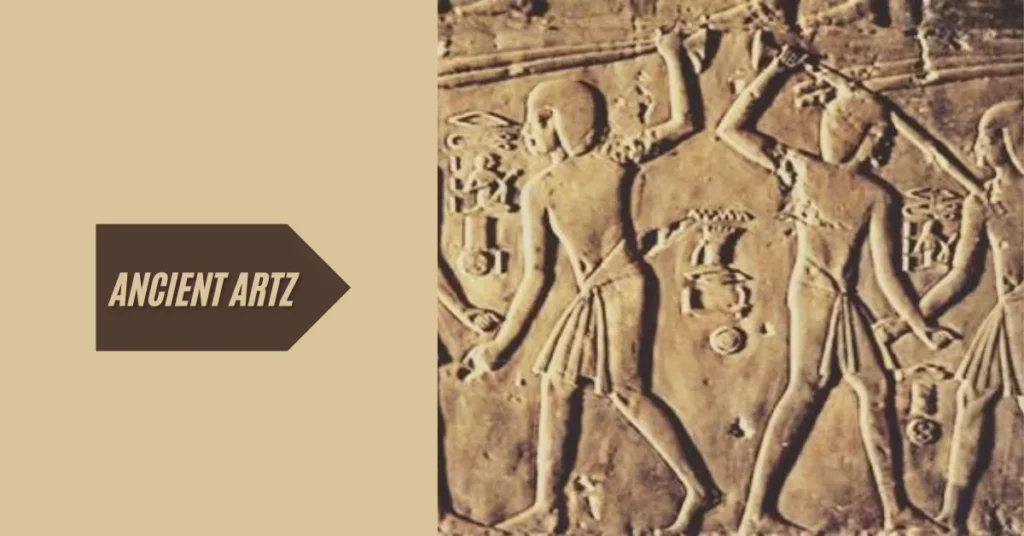Introduction to Ancient Art and Culture
Ancient artz hold a mirror to our past, reflecting the creativity and spirit of civilizations long gone. From intricate pottery and stunning frescoes to monumental sculptures, these artifacts tell stories that transcend time. They are not just relics; they are windows into the beliefs, values, and daily lives of people who lived thousands of years ago.
As we explore the fascinating world of ancient artz and culture, we’ll uncover how these creations shaped societies and continue to inspire modern artists today. Join us on this journey through history as we celebrate the beauty and significance of artistic expression from ages past!
The Importance of Preserving Ancient Art and Culture
Preserving ancient art and culture is vital for understanding our roots. These treasures are windows into the lives of those who came before us. They reflect values, beliefs, and traditions that shaped societies.
When we protect these artifacts, we ensure future generations can learn from them. Each piece tells a story; each monument holds significance that transcends time.
Moreover, preserving ancient art enriches our cultural identity. It connects us to diverse histories across the globe. This shared heritage fosters appreciation and respect among communities.
In an age where globalization often overshadows local cultures, safeguarding ancient art becomes even more crucial. It provides a sense of belonging in an ever-changing world that sometimes feels disconnected from its past.
By valuing these historical assets, we celebrate human creativity and resilience throughout history—a testament to our journey as a civilization.
Major Civilizations and Their Contributions to the World of Art and Culture
Ancient civilizations laid the groundwork for modern art and culture. The Egyptians, renowned for their monumental architecture, gifted us iconic pyramids and intricate hieroglyphics. Their artistry reflects a deep reverence for life after death.
Meanwhile, the Greeks introduced concepts of beauty through sculpture and philosophy. Their craftsmanship in marble created lifelike figures that have inspired countless artists throughout history.
The Romans expanded on these ideas with engineering marvels like aqueducts and amphitheaters, blending functionality with aesthetic appeal. They also preserved Greek traditions while infusing their own cultural elements.
In Asia, dynasties such as the Han in China contributed to calligraphy and pottery techniques that are still celebrated today. Meanwhile, India’s rich tapestry of textiles showcases vibrant colors and intricate designs that tell stories of heritage.
Each civilization’s unique contributions enrich our understanding of human expression across time and geography.
Famous Artifacts and Monuments from Different Eras
The world is a treasure trove of ancient artz that narrate untold stories through time. One of the most iconic artifacts is the Rosetta Stone, which unlocked the secrets of Egyptian hieroglyphs, bridging cultures and eras.
Traveling to Greece, the Parthenon stands majestically on the Acropolis. This temple not only symbolizes ancient Greek architecture but also reflects their rich mythology and devotion to Athena.
In Asia, we cannot overlook the Terracotta Army in China. Discovered by chance in 1974, these life-sized statues guard Emperor Qin Shi Huang’s tomb, showcasing exquisite craftsmanship from over two millennia ago.
Across cultures and centuries, each artifact carries echoes of human ingenuity. From intricate jewelry to colossal monuments like Machu Picchu in Peru, these remnants connect us with our ancestors’ beliefs and aspirations. Each piece invites curiosity about its origins and significance within its historical context.
How Ancient Art and Culture Continues to Influence Modern Society
Ancient art continues to echo through our lives today. Its influence is visible in everything from fashion to architecture. Designers often draw inspiration from the intricate patterns and symbols found in ancient civilizations.
Cultural practices rooted in history still shape modern rituals and celebrations. Many festivals celebrate traditions that have their origins thousands of years ago, connecting us with our ancestors.
Artistic techniques like fresco painting or mosaic creation are revived by contemporary artists aiming for authenticity in their work. Museums worldwide showcase these timeless pieces, inviting new generations to appreciate their beauty.
Social movements also reflect ideals established in antiquity, emphasizing community values and shared heritage. The stories told through ancient artifacts resonate with themes of resilience and human experience, reminding us of our collective journey.
In education, curricula increasingly incorporate lessons on ancient cultures to foster global awareness among young learners. This connection enriches society’s appreciation for diversity and creativity.
Challenges in Preserving Ancient Art and Culture
Preserving ancient art and culture presents numerous challenges. Time is a relentless adversary, eroding materials like stone and clay. Environmental factors such as humidity, pollution, and temperature fluctuations further threaten these treasures.
Political instability can also play a significant role in the preservation crisis. War zones often see cultural heritage sites looted or destroyed without regard for their historical significance. This loss is felt globally as it diminishes our shared human experience.
Limited funding is another hurdle faced by many organizations dedicated to conservation efforts. Often, they struggle to secure resources necessary for restoration projects or proper storage facilities.
Moreover, public awareness varies significantly across regions. Many people remain unaware of the importance of preserving ancient artifacts and monuments. Education plays an essential part in fostering appreciation and advocacy for these irreplaceable pieces of history that define our past.
The Role of Technology in Preserving and Understanding Ancient Art and Culture
Technology plays a pivotal role in the preservation of ancient artz and culture. Innovations such as 3D scanning allow us to create detailed digital replicas of artifacts, ensuring they can be studied without risking damage to the originals.
Virtual reality (VR) has transformed how we experience historical sites. With VR, enthusiasts can immerse themselves in ancient civilizations, exploring their environments from anywhere in the world.
Digital archives make vast collections of artwork and manuscripts accessible online. This democratizes knowledge, allowing researchers and curious minds alike to dive into history with just a few clicks.
Additionally, artificial intelligence aids in analyzing patterns within ancient artz. By recognizing styles or techniques across different cultures, AI helps historians draw connections that may have previously gone unnoticed.
These advancements not only enhance our understanding but also inspire new generations to appreciate the richness of our shared heritage.
Conclusion: Why It’s Important to Continue Expl
Exploring ancient artz is not just about appreciating the beauty of the past; it’s about understanding our shared human experience. Ancient art and culture offer glimpses into civilizations that shaped our world today. They reflect values, beliefs, and stories that resonate through time.
Preserving these treasures is vital for future generations. They provide context to our current societal norms and practices. By studying them, we can learn from history’s triumphs and mistakes.
Moreover, the influence of ancient art continues to inspire modern creativity across various fields—from architecture to fashion. The aesthetics of bygone eras often find their way into contemporary works, reminding us that inspiration knows no boundaries.
As technology advances, new methods are emerging to protect and study these artifacts more effectively. Digital archiving, 3D modeling, and virtual reality experiences allow us a deeper connection with ancient cultures without compromising their integrity.
Recognizing the significance of preserving ancient artz enriches society as a whole. It fosters appreciation for diversity while promoting cultural heritage awareness globally. The effort put into safeguarding such invaluable pieces reflects respect for humanity’s rich tapestry woven through time.
Understanding this importance encourages ongoing exploration in this fascinating realm—a journey well worth undertaking for anyone curious about where we’ve come from and where we’re heading next.
FAQs
Q: What are ancient artz?
Ans: Ancient artz refers to artistic expressions and creations from early civilizations, reflecting their cultural values and beliefs.
Q: Why is ancient art important?
Ans: Ancient art is crucial for understanding the history, culture, and social dynamics of past societies, providing insights into human experience.
Q: What techniques are used in ancient artz?
Ans: Ancient artz employs various techniques, including painting, sculpture, pottery, and textiles, often influenced by available materials and cultural practices.
Q: Where can I explore ancient artz?
Ans: You can explore ancient artz in museums, archaeological sites, and historical exhibits, as well as through academic literature and online resources.
Q: How does ancient art influence modern culture?
Ans: Ancient art continues to inspire contemporary artists and designers, influencing modern aesthetics, themes, and cultural expression







